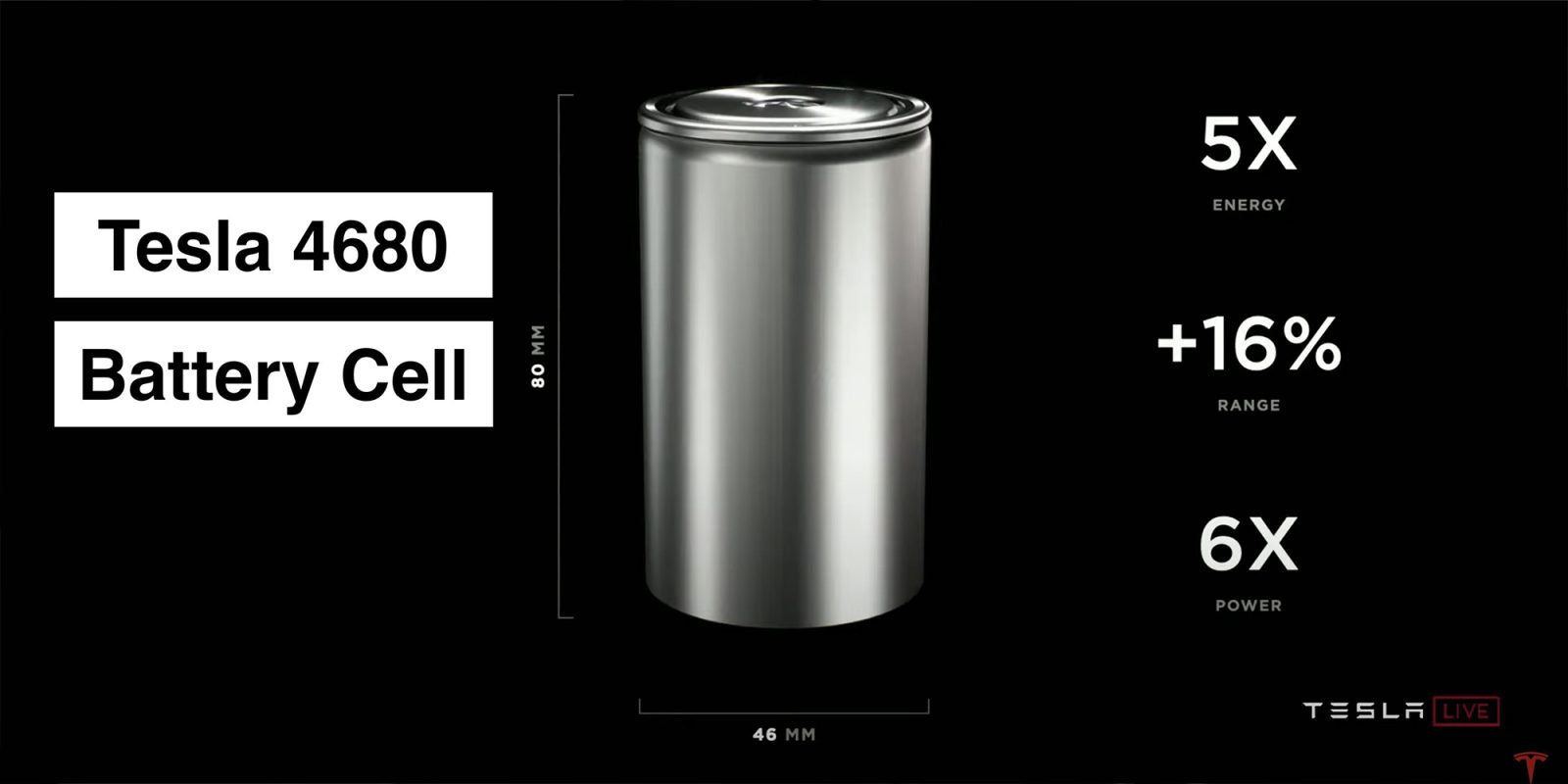
Tesla has released a very detailed update on its 4680 battery cell program, which is expected to be critical for its future electric vehicles.
The 4680 battery cell format has taken the industry by storm since Tesla unveiled its own cell strategy at Battery Day in 2020.
The automaker claimed a potential to reduce battery cost by over 50% with the new design; it has been trying to bring it to volume production since, but it has run into some bottlenecks.
In a conference call following the release of its Q1 2023 financial results, Tesla gave a detailed update about its 4680 battery cell production.
Drew Baglino, Tesla’s senior VP of engineering, said about the 4680 cell:
On Battery Day, we established a cost-down roadmap through 2026 across five areas of effort. There was the cell design we discussed; anode and cathode materials, the structural pack concept, and the cell factory itself. We’ve been making progress across all these aspects since then. For the Cell Factory, for the Texas 4680 factory, we are part way through building and commissioning and installing and operating, will be 70% lower capex per gigawatt hour than typical cell factories when fully ramped in line with what we described on Battery Day. And we’re continuing to further pursue densification and investment reduction opportunities in future factory buildouts like in Nevada.
Tesla is producing 4680 cells at its pilot plant in Fremont, but it is expected to reach higher volume production at Gigafactory Texas, which is the “cell factory” Baglino is talking about here.
He continued:
On the cell design, we’re in production with not only the first generation tabless cell we unveiled on Battery Day but a second more manufacturable version in Texas today. On the cathode material side. we have a number of activities underway per the Battery Day roadmap. For lithium, our Corpus Christi Lithium Refinery breaks ground this May. Our goal is to start commissioning portions of the facility for the end of the year. The refinery uses the sulfate-free refining process with reduced process costs, no acid or caustic reagents, lower embodied energy. It actually produces a beneficial byproduct that can be re-purposed in construction materials.
The executive also gave a more specific update on its cathode factory at Gigafactory Texas:
We discussed all of these concepts on Battery Day. Same with cathode precursor, we’ve successfully demonstrated a lower process cost, zero waste water precursor process that we described on Battery Day at both lab and pilot scale and are on the detailed design phase for incorporating this technology into the front end of our Austin cathode facility. On cathode production, we are 50% equipment and 75% utilities installed at our new cathode building in Austin with our goal to begin dry and wet commissioning this quarter and next quarter with a target to produce first material before the end of the year.
The 4680 cell also enables Tesla’s new structural battery pack design. The Model Y in production at Gigafactory Texas is the first one to feature this radically different chassis/battery pack design, but Tesla’s future vehicles, including the upcoming Cybertuck, are expected to feature this design.
Baglino gave an update on that front:
Structural pack, we saw big improvements with pack manufacturing with the 4680 cell on the structural pack concept, 50% lower capex and 66% smaller factory with the same output in gigawatt hours per year. We do believe structural as a concept is a good one. It’s simpler. We’ll continue to structurally load the cells and use the pack as the floor of the vehicle while iterating the design to closer to B-level execution of this A-level architecture in future programs. And zooming out for the 4680 team Q1 was all about cost and quality.
The executive shared some details about improvements in production output this quarter and focused on reducing costs going forward in preparation for Cybertruck volume production:
We made significant improvements in both areas. On Texas production, we increased 50% quarter-over-quarter, through yields increased 12% and peak rate increased by 20% and through yields improved by 20%. Altogether, the team accomplished a 25% reduction in COGS over the quarter and we are on track to achieve steady-state cost targets over the next 12 months. And going forward for the rest of the year, the priority one is to yield in cost for the 4680 program as we steadily ramp production ahead of Cybertruck next year.
This is the most detailed update on Tesla’s 4680 battery program and could indicate that Tesla is starting to get out of the woods.
We recently reported that the automaker was having some issues with the dry electrode in the 4680, but it recently hired a new expert to help.
FTC: We use income earning auto affiliate links. More.



![Finance a new EV for less: EV deals with 0% interest this September [update]](https://i0.wp.com/electrek.co/wp-content/uploads/sites/3/2024/08/Polestar-first-electric-SUV-US-1.jpeg?resize=1200,628&quality=82&strip=all&ssl=1)
![This is it: the FIRST pure electric vehicle to wear a Lamborghini badge [video]](https://i0.wp.com/electrek.co/wp-content/uploads/sites/3/2025/09/lamborghini_pwc.jpg?resize=1200,628&quality=82&strip=all&ssl=1)

![Stellantis' new EV battery tech will put it ahead of – well, EVERYONE [video]](https://i0.wp.com/electrek.co/wp-content/uploads/sites/3/2025/09/Peugeot-E-3008_MAIN.jpg?resize=1200,628&quality=82&strip=all&ssl=1)





